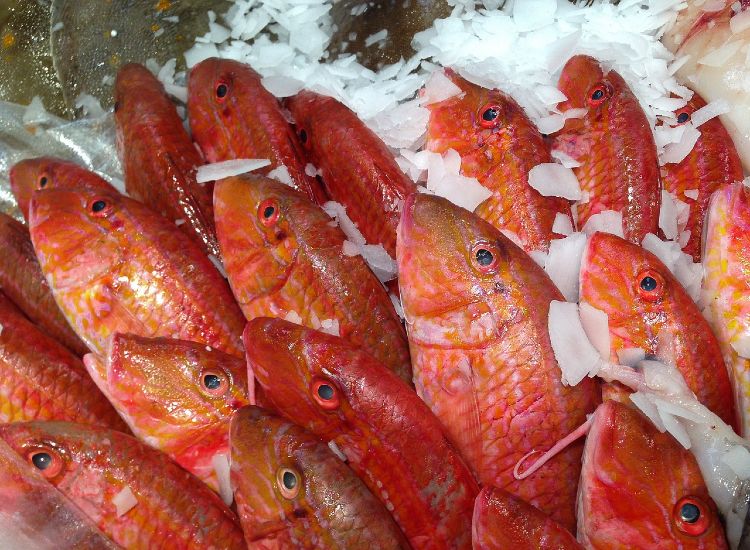Top Multi-media Marketing Tips for Small Food and Drink Producers and Sellers
Mark Glynne-Jones is the owner of JumpTo, an Oxfordshire based design company that helps new and established brands with packaging and product design, corporate identity, advertising, copywriting, illustration, photography, market research, brand planning, online design, e-marketing and social media. He has spent over thirty years working with small, medium and big companies in the food, drink and lifestyle industries, from Tyrrells Crisps, to Covent Garden Soup, Johnsons’ Juice, Marstons’ Beers, Heineken, Citroen and Portmeirion Pottery. The Foodie Bugle asked Mark to help small artisanal food and drink producers, who do not have big budgets to spend on website design, branding and PR, but still need to keep a foothold in the competitive world of multi-media marketing. Here are his top tips.
1. Follow the leaders
Social media, and especially Twitter, are the new PR platforms. Google the people you think are leaders in your specific food and drink area, find out all about them, then follow them. Follow the Editors of your trade magazines, and follow who they follow. Do not be frightened to make contact with influential, successful and established people in the food and drink industry who may be able to help you gain a foothold from the bottom and pull you up. If they ignore you, keep following them. Do not be invasive or loud, but be consistent. Follow self- styled “gurus” selectively, as they are often not the real influencers, but merely followers themselves. Visit and read the blogs in www.mashable.com as this will keep you updated with social media news, and www.smashingmagazine.com is also a useful technical resource for the design and building of websites. Search www.twitter.com to find out how Twitter can help your business. Use Tweetdeck, as it can help keep you efficiently updated with important trends, businesses and people.
2. Think big, even if you are just a small business
Even if you are a small food or drink producer, make contact with the Editors of big food magazines, like Delicious, Waitrose Kitchen or Olive. They need to write about smaller players, and they might choose you next. If you cannot afford PR then gain exposure in the heartland of PR (TV, radio and the press) by consistently contacting people in those worlds to tell them about your range of soups or your cookery courses.
3. Use Linkedin
www.linkedin.com is rapidly becoming one of the fastest networking sites, with over 100 million members, and a fast track into engaging with your professional peer group. It is one of the best ways to make contact with the buyers, sellers and producers of food and drink, to gain insight into their work and access their knowledge and contacts.
4. Research advertising on Google
Do not assume it is going to cost a fortune to advertise on Google. You can make contact with Google, and there are favourable rates even for small businesses. Never be afraid of getting informed on offers, deals and collaborative arrangements. Do not let fear of big organisations prevent you from making enquiries.
5. Be vocal with local media.
Local media is more and more important in spreading the word. Business is like a small village, word will soon get round that your chocolate brownies are the best, your elderflower cordial is the sweetest and your locally grown, hand-made potato crisps are the crunchiest. Ensure you make contact with all local foodie newspapers, magazines or radio shows. This information will ripple and filter out from the local media channels into the national media, say from BBC Wales, to national BBC Radio, or even the BBC website. All editorial is the best form of free advertising, and all editors are looking for stories.
6. Invade the space and network within it.
If you read a comment on Twitter, or you hear a comment at a party or at a business gathering about preserves and seasonal fruit, and you want to project your brand of jam, marmalade or chutney, then get into that space, start chatting politely, and swing that conversation so that you can inform people about your brand. Do not be afraid to enter a space, either physical or virtual: as long as you are charming and well mannered, most people will find it very interesting to learn about, and maybe even champion, your brand. Return others the favour too, by allowing them to enter your space when you are more established.
7. Don’t make false economies on creating websites
You can build a relatively basic WordPress based website very quickly and very cheaply, but in the long run, if you wish to add to it later, as in adding an online store, you will need to spend more money to amend the website later. Your website is your bespoke shop window, so think long and hard how it should be structured. Create a “mood board”, so you can discuss with your designer how you want it to look, and get your designer to add to it. Quiz your designer, ask them what they think of your current website and how they propose to improve it to make it easier to navigate and quicker to search. Get a really good domain name that sells your brand. Always choose a domain name that really describes what you do very clearly, so that anyone searching through search engines will find you readily, in the right category. Obscure names may seem witty at the time, but they will not bring customers to your door.
8. Talk about your food values
Increasingly food consumers want to know about the provenance, sustainability and ethics of the food they eat. If you are selling locally reared, ethically sourced, organically grown or socially responsible food or drink products, then tell the consumer precisely what makes your product so special. People buy brands, but people also buy people, and if there is a special “personal” story, maybe family history or regional attraction behind your food brand, these are extremely significant “hooks” so make sure you showcase them.
9. Go people and product watching
Go and visit the big players in the food world: the top supermarkets, the best delicatessens, the best restaurants in your area, the busiest farmers’ market, take a notepad with you and watch, listen and learn. What are the customers buying? On which shelf is that product placed? Ask the waitress which dish is the most popular, and where did the ingredients come from? Can you hear the customers talking to one another how they feel about that brand? Inform yourself, and copy the masters of their craft. There is so much market research information out there that is readily available and free if you just focus on getting it.
10. Utilise the power of simple fonts and logos
Fonts and logos are very important. Think clearly how and where you are going to use them: on packaging, on stationery, on pamphlets, on leaflets, online etc. If you have a small marketing budget, and cannot afford a fully-fledged brand design company to design a new logo, just produce a really good, simple, classic, clean font, as they are all online and most are free. In conjunction with a nice, simple, clear image, a good font is an extremely powerful marketing tool. Consider whether your new logo and name need a support strapline. For example, if your logo is of a bowl of fruit, you may need a strapline that says “The fruitiest ice-creams, made by hand, straight from the orchard” to show the consumer that all your ice-creams are artisanal and natural. Keep it short and to the point, but totally relevant.
11. Make the best use of professional photography
Do not try to turn someone in your marketing department into a photographer if they are not. Shop around for a good value photographer. Go into the Image bank of www.gettyimages.com or www.corbisimages.com and search their images, refining your search until you find just the right, professional, stylised photograph that would be suitable for selling your product. Analyse its presentation, styling, colours, the accessories used, where the light falls, where the shadows are, what the background looks like and so on. Make notes, and use these notes to get your own local photographer to take a really good shot of your fresh quiches, or beers, or wines or chocolate truffles. Do your own styling, your own cooking, your own preparation. With a bit of thought and study, you can achieve really successful photography at a fraction of the cost that the top brands incur.
12. Use Facebook for online sales
We now live in a post-advertising era, as so many businesses are doing their own advertising online. You can set up your own online sales on Facebook, thereby getting immediate customer referrals as one friend will show another friend and share the photographs and descriptions of the cupcakes they have just bought, or the cookery course they have just booked or the cookbooks they have just ordered.
13. Find an “ownable” space and then own it.
If there is a market niche, for example artisanal doughnuts, made and decorated the old fashioned way, without additives, preservatives or colourants, then own that market, make yourself the king of artisanal doughnuts. Make sure the packaging, the logo, the font and the imagery used all show how innovative your product is. You have made the new concept your own property, by sending out to the customers consistent signals that your brand is original and unique.
14. Demonstrate concern and understanding for the future of food.
There are now seismic changes taking place in the food industry. Food costs are spiralling, there is a flight back to quality, home growing, saving the planet, limiting waste and feeding and educating our children better. Show concern and understanding of this, offer your customers solutions and tell them what they are. For example, there are new pop-up market garden shops springing up, where people are growing food in boxes in shops, and selling them within the community, distributed door-to-door in some cases. Always show the customer that you are concerned about all the issues so that your brand becomes the solution to the problems customers are facing in their daily lives.
Contact Details
Website: www.jumpto.co.uk
E-mail: [email protected]
Twitter: @markglynnejones
Address:
JumpTo,
The Forage Barn,
Little Baldon,
Oxfordshire OX44 9PU
Telephone: 01865 343999



